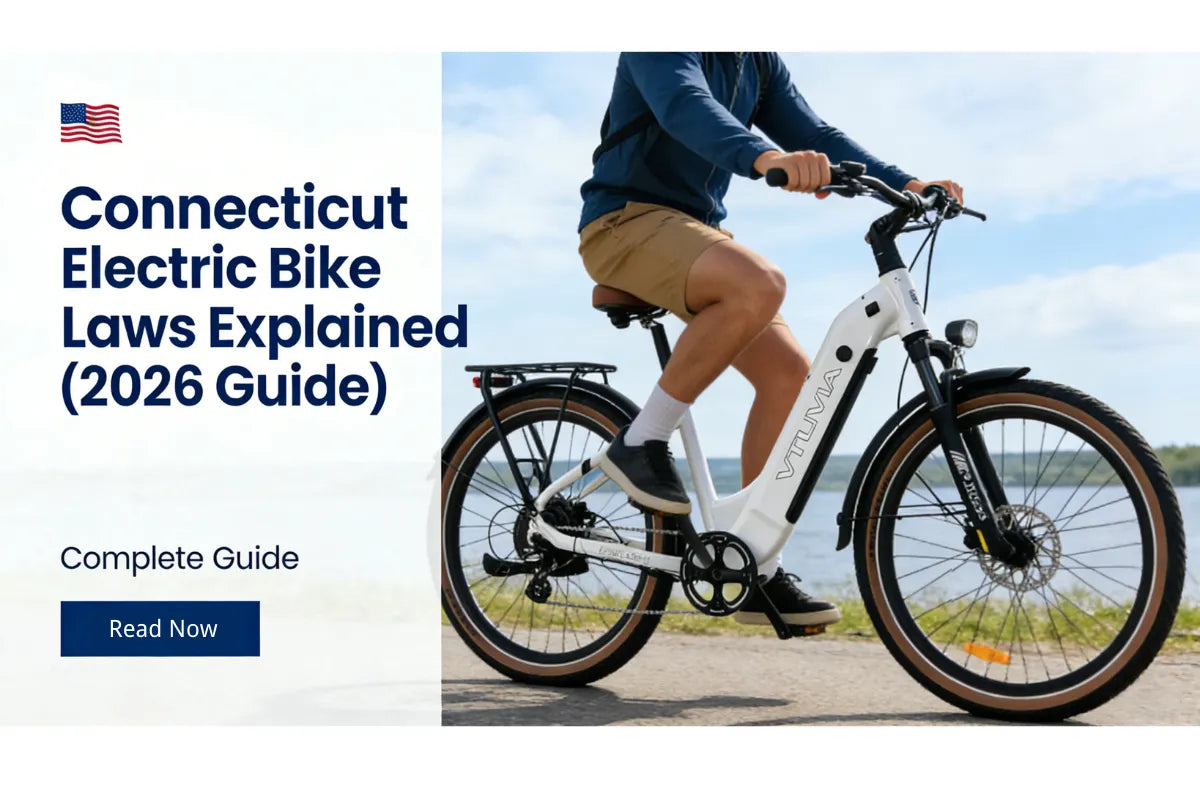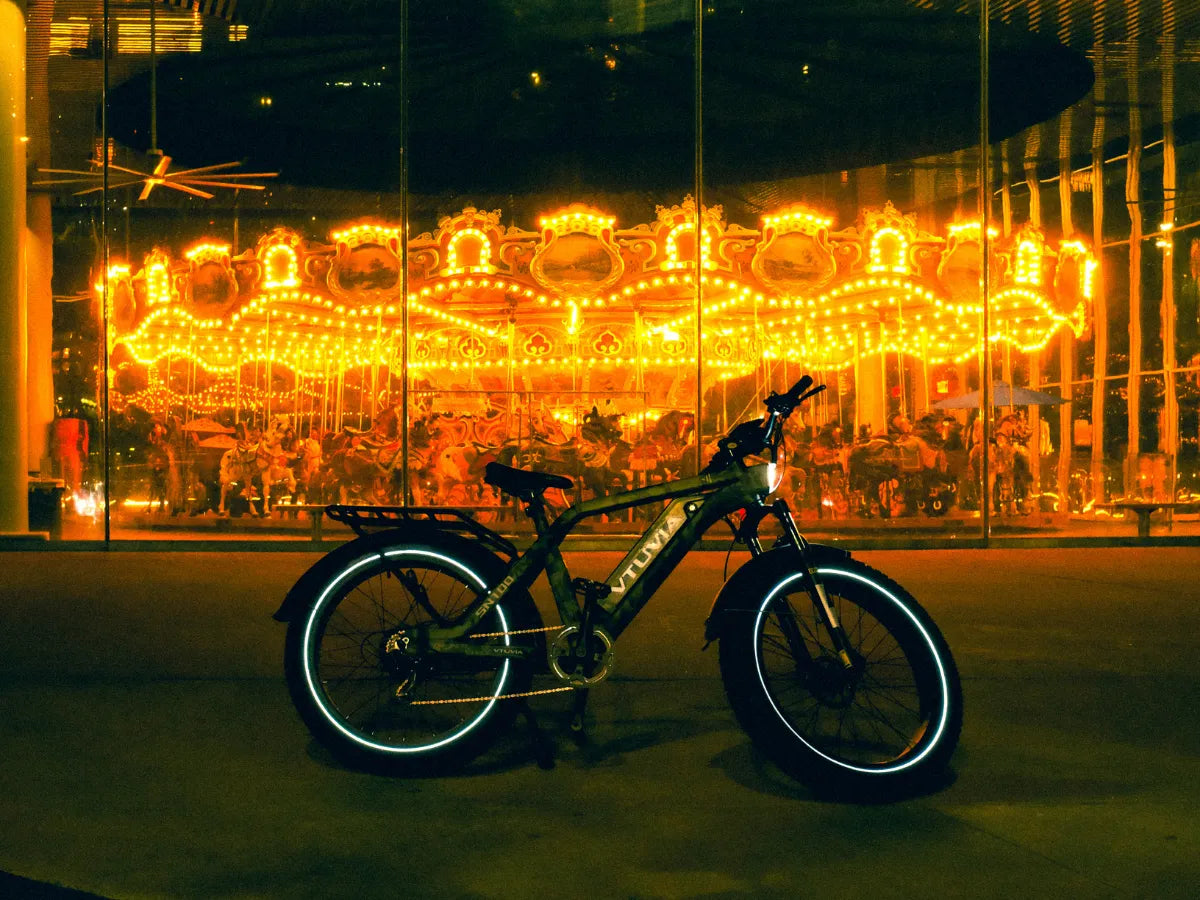Definitive guide • Updated 2025
Do You Need a License for an Electric Bike? The Complete Global Guide (2025)
Short answer: Usually no for most standard electric bike classes (Class 1 & 2), but the rules depend on country, state, and whether your electric bike exceeds local speed or power thresholds. This guide consolidates laws, registration steps, checklists, and expert resources so you can ride legally and confidently.
Estimated read: 12–16 minutes • Last updated: October 23, 2025
Quick Answers — At a Glance
Short summary: If your electric bike meets standard limits for a bicycle in your jurisdiction (commonly ≤250 W & ≤25 km/h in Europe, Class 1/2 ≤20 mph in the U.S.), a license is usually not required. Higher power or speed, throttle-only designs, or local moped-style classifications often require license, registration, and insurance.
- Is the electric bike within your region's legal limits for power/speed and pedal-assist? → If yes, probably no license required.
- Does it have a throttle and exceed regional limits? → Often classified as moped — license likely required.
- Is it modified beyond stock specs? → Check registration and insurance rules — modifications can change classification.
Key Terms & Definitions
Electric bike classes (common frameworks)
- Class 1 — Pedal-assist only, assistance up to 20 mph (≈32 km/h) in the U.S. (no throttle, usually no license).
- Class 2 — Throttle or pedal-assist up to 20 mph (≈32 km/h) in the U.S. (may be treated like bicycle in many states).
- Class 3 — Pedal-assist only, assistance up to 28 mph (≈45 km/h) in the U.S.; often subject to additional rules (age, helmet, registration in some places).
Other important terms
- Nominal motor power: the continuous power rating (e.g., 250 W). Peak power may be higher.
- Throttle: a control that provides power without pedaling (many laws treat throttle-based vehicles more strictly).
- Speed limiter: a device or firmware that caps top assistance speed; relevant to compliance.
- Moped / motorized vehicle: in many jurisdictions, vehicles above thresholds are categorized here and usually require license/registration/insurance.
Sources to cite in this section: CPSC (US), NHTSA guidance, EN15194 (EU), official state DMV pages, country transport authorities.
Global Overview — How Rules Differ by Region
Regulation of electric bike use varies widely. Below are the typical regional patterns and crucial exceptions.
Europe & United Kingdom
- Common rule: ≤250 W motor and assistance cut-off at ≤25 km/h (approx. 15.5 mph) — treated as bicycle (no license) in most EU countries and UK.
- Higher-powered models or throttle-only systems are often classed as mopeds and require registration, plate, and license.
- Example citations: EU regulation, national transport agency pages (Germany, Netherlands, UK DVSA).
United States
- No single federal license for electric bikes; federal agencies define product safety basics (CPSC) but states set road rules.
- U.S. common framework: Class 1/2/3. Many states treat Class 1 and 2 like bicycles; Class 3 often has extra restrictions (helmet, age, local bans).
- This guide includes a U.S. state table and instructions on how to verify your state's current rules.
Asia
- Large variation: China has extensive electric bike markets with local registry rules; India may classify higher-powered electric bikes as motor vehicles.
- Important: many Asian countries maintain separate rules by city or region — always check at the municipal level.
Middle East, Australia, Latin America & Africa
- Rules vary significantly; some countries have moped-style rules, others are more permissive. Australia has state-level differences similar to the U.S.
United States — State-by-State Guide & How to Read It
This section helps you find precise local requirements. For convenience we provide an abridged table and a downloadable CSV file you can import and search.
Download: US State Rules (CSV) • View interactive map
How to use the table
- Find your state and read the "Condition" column (Yes / No / Conditional).
- Follow the official link column to the DMV or state legislative text for exact wording.
- If a rule is "Conditional", read the notes — often it refers to Class 3 or throttle-based bikes.
Sample state table (abridged)
| State | License Required? | Min Age / Helmet | Registration? | Notes |
|---|---|---|---|---|
| California | No (most Class 1 & 2) | Helmet for under 18; Class 3 helmet required for riders of that class | No for Class 1/2; conditional | Local city ordinances may restrict certain paths; Class 3 has extra rules. |
| Texas | No for Class 1/2; conditional for Class 3 | Age restrictions sometimes for Class 3 | Usually no for Class 1/2 | Throttle-based high-power bikes may be treated as mopeds. |
| New York | Varies — Class 3 has special rules | Helmet required for younger riders | Conditional | Check state DMV: some localities treat electric bikes as mopeds if motor or speed exceed thresholds. |
Featured state case study — California (example)
What matters: California law distinguishes electric bike classes and allows Class 1 and 2 use on bike lanes (subject to local rules). Class 3 is allowed on roads but may be restricted from some bike paths. Always check both state and municipal codes.
Practical action: Search “California Vehicle Code electric bicycle” on the state legislature site or visit California DMV.
When You Do Need a License — Common Scenarios & How to Comply
Typical triggers for licensing/registration
- The electric bike exceeds local power or speed thresholds (e.g., over 250 W / 25 km/h EU or >750 W / high-speed in some U.S. contexts).
- The vehicle is throttle-only and functions like a moped / motor vehicle.
- The electric bike has been modified (derestricted, motor swapped, controller reflashed).
- Used for commercial purposes (delivery fleet) in jurisdictions with tighter commercial vehicle requirements.
Step-by-step: How to register / get a license if required
- Gather documents: proof of purchase, manufacturer specifications (motor wattage, top assist speed), ID, any bill of sale.
- Check local DMV website for the exact form and fee. (Use the CSV to find the DMV link.)
- Submit application — may require inspection or proof of compliance (lights, reflectors).
- If assigned a plate/VIN, obtain insurance if required by law.
Buying an Electric Bike — How to Ensure It’s Legal Where You Ride
Pre-purchase checklist
- Confirm motor nominal power (W) and top assisted speed in manufacturer specs.
- Ask if the bike has a throttle; note local rules for throttle-based bikes.
- Request manufacturer certification labels and packaging info that show compliance (e.g., CE, EN15194 for EU).
- Check local law using the CSV or the manufacturer's recommended country settings.
Red flags for used or imported electric bikes
- No manufacturer label or serial number.
- Aftermarket controllers or obvious motor swaps.
- Dealer claims like “derestricted” or “unlockable to higher speeds” — treat as non-compliant until verified.
Modifying & Myths — Legal Risks and What to Believe
Common modifications that create legal issues
- Derestricting speed limiters or reflashing controllers.
- Swapping a higher-power motor or battery beyond stock ratings.
Debunking common myths
-
Myth: “If it looks like a bike, it’s legal.”
Reality: Appearance doesn't determine classification — specs and performance do. -
Myth: “No one enforces electric bike rules.”
Reality: Enforcement varies, but fines, confiscation, or reclassification do occur — especially after incidents. -
Myth: “Imported or modified bikes avoid rules.”
Reality: Customs, registration, and local enforcement can still apply; imports may complicate insurance eligibility.
Insurance, Liability & Enforcement — What Riders Need to Know
Insurance: required vs recommended
- If your electric bike is legally a moped or motor vehicle, insurance is often mandatory.
- Even if not legally required, liability and personal injury insurance is recommended for higher-speed models and commercial use.
Examples of enforcement and liability
Include real-world examples where riders were ticketed for riding non-compliant electric bikes or where insurance denials occurred after modifications. (Insert local case citations here.)
Tips to reduce personal risk
- Keep maintenance records and receipts.
- Use a good helmet and lights; follow road rules.
- For fleet operators, maintain operator training logs and clear rental agreements.
Enforcement Trends, Policy Changes & The Near Future
Policy is evolving rapidly. Below is a short timeline and what to watch for.
Recent timeline (2020–2025)
- 2020–2022: Rapid growth in electric bike adoption; many jurisdictions clarified class rules.
- 2023–2024: Several states/municipalities considered throttle bans on shared electric bikes and tightened commercial rules.
- 2025: Continued harmonization attempts and industry self-regulation; watch emerging UNECE/ISO activity.
What to watch (next 2–5 years)
- Harmonization attempts across states/countries vs. localized restrictions.
- More explicit rules for fleet and rental operations (geofencing, speed-limits by zone).
- Potential consumer labeling standards to make compliance easier at purchase.
Buyer's Decision Matrix & Quick Guides
One-page quick decision flow
If you want top assistance >28 mph or a throttle: be prepared for licensing, insurance, and possible registration. If you want a legal commuter that avoids license needs in most places, target models ≤250 W and ≤25 km/h (EU) or Class 1/2 ≤20 mph (US).
Beginner's checklist before the first ride
- Check local law (CSV or DMV link).
- Verify manufacturer specs and labels.
- Confirm helmet and lighting rules.
- Register or insure if required.
Frequently Asked Questions
Do I need a license to ride an electric bike in my state?
It depends. Use our state table or contact your DMV. Most states don’t require a license for Class 1/2; Class 3 and higher-power bikes may be regulated.
Can my child ride an electric bike?
Check age limits and power caps by state or country. Many states restrict Class 3 to older riders and require helmets for younger riders.
What happens if I'm pulled over on a non-compliant bike?
You may face fines, impoundment, or be required to register the vehicle. Always show proof of purchase and any required documentation.
Conclusion — Practical Takeaways
- Most standard electric bikes (within class limits) do not require a license — but always verify local rules.
- Modifying a bike can change its legal classification and trigger registration/insurance requirements.
- If in doubt: keep manufacturer specs, contact your local DMV, and use the downloadable checklist in this guide.





Share:
How to Replace an Electric Bike Fork: Complete Step-by-Step DIY Guide
How Do Electric Bikes Work? The Complete 2025 Guide Explained